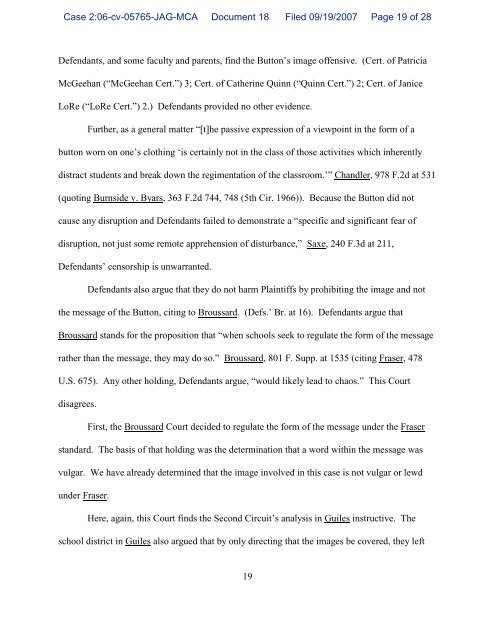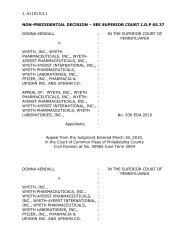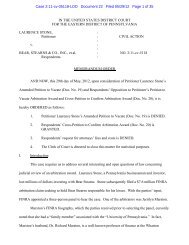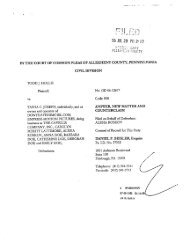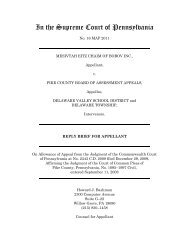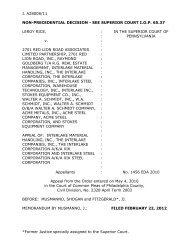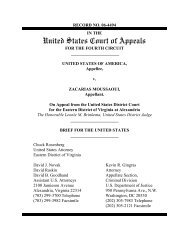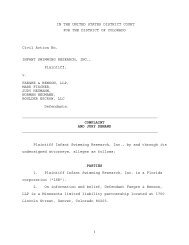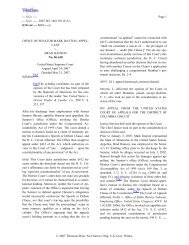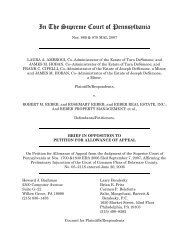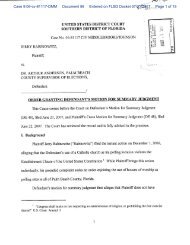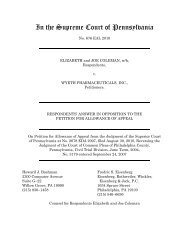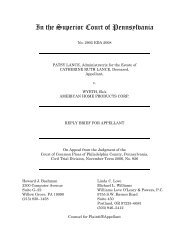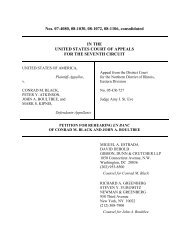DePinto v. Bayonne Board of Education
DePinto v. Bayonne Board of Education
DePinto v. Bayonne Board of Education
You also want an ePaper? Increase the reach of your titles
YUMPU automatically turns print PDFs into web optimized ePapers that Google loves.
Case 2:06-cv-05765-JAG-MCA Document 18 Filed 09/19/2007 Page 19 <strong>of</strong> 28<br />
Defendants, and some faculty and parents, find the Button’s image <strong>of</strong>fensive. (Cert. <strong>of</strong> Patricia<br />
McGeehan (“McGeehan Cert.”) 3; Cert. <strong>of</strong> Catherine Quinn (“Quinn Cert.”) 2; Cert. <strong>of</strong> Janice<br />
LoRe (“LoRe Cert.”) 2.) Defendants provided no other evidence.<br />
Further, as a general matter “[t]he passive expression <strong>of</strong> a viewpoint in the form <strong>of</strong> a<br />
button worn on one’s clothing ‘is certainly not in the class <strong>of</strong> those activities which inherently<br />
distract students and break down the regimentation <strong>of</strong> the classroom.’” Chandler, 978 F.2d at 531<br />
(quoting Burnside v. Byars, 363 F.2d 744, 748 (5th Cir. 1966)). Because the Button did not<br />
cause any disruption and Defendants failed to demonstrate a “specific and significant fear <strong>of</strong><br />
disruption, not just some remote apprehension <strong>of</strong> disturbance,” Saxe, 240 F.3d at 211,<br />
Defendants’ censorship is unwarranted.<br />
Defendants also argue that they do not harm Plaintiffs by prohibiting the image and not<br />
the message <strong>of</strong> the Button, citing to Broussard. (Defs.’ Br. at 16). Defendants argue that<br />
Broussard stands for the proposition that “when schools seek to regulate the form <strong>of</strong> the message<br />
rather than the message, they may do so.” Broussard, 801 F. Supp. at 1535 (citing Fraser, 478<br />
U.S. 675). Any other holding, Defendants argue, “would likely lead to chaos.” This Court<br />
disagrees.<br />
First, the Broussard Court decided to regulate the form <strong>of</strong> the message under the Fraser<br />
standard. The basis <strong>of</strong> that holding was the determination that a word within the message was<br />
vulgar. We have already determined that the image involved in this case is not vulgar or lewd<br />
under Fraser.<br />
Here, again, this Court finds the Second Circuit’s analysis in Guiles instructive. The<br />
school district in Guiles also argued that by only directing that the images be covered, they left<br />
19


